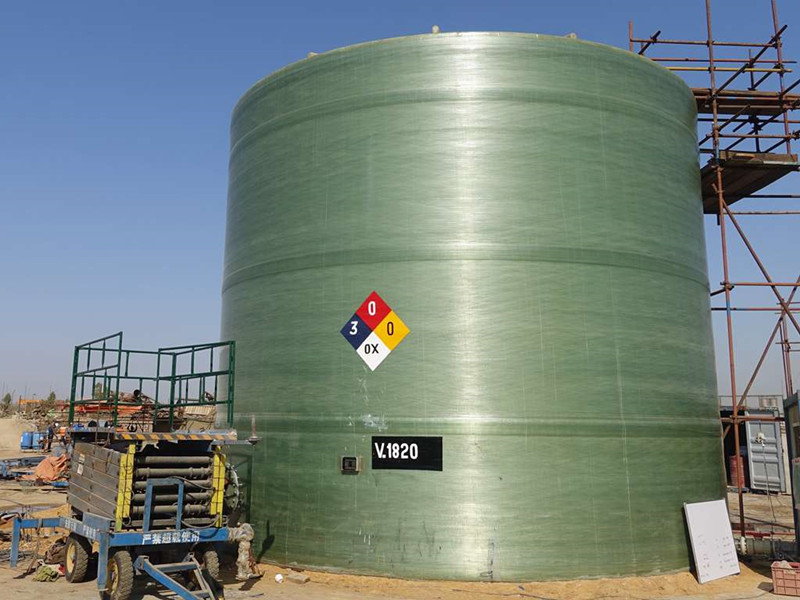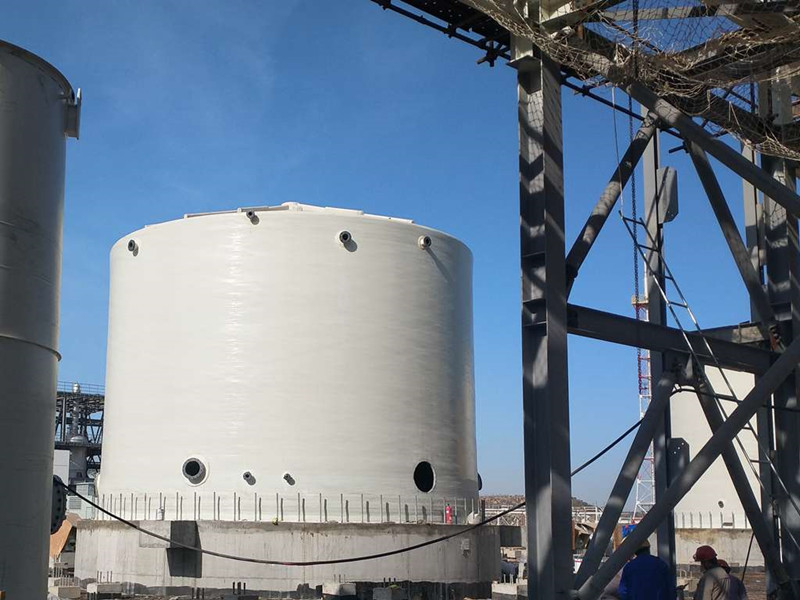Large Size Field Tanks: Durable, Custom, High-Capacity
Field-Built Composites: Why Large Size Field Tanks Are Reshaping Storage Projects
If you’ve ever tried to move a 20-meter-diameter storage vessel down a city road, you know: at a certain scale, factory-built can’t beat field-built. That’s where Large Size Field Tanks in fiberglass (FRP) quietly dominate. Originating from No. 1289, Yingbin South Street, Jizhou District, Hengshui, Hebei, China, this program ships winding equipment to the jobsite, fabricates the shell on a prepared foundation, and trims transport costs to almost zero. It sounds simple; in practice it’s a highly controlled, standards-driven process.

What’s trending (and why it matters)
Two converging trends: chemical plants seeking corrosion-proof assets for >20 years, and EPCs under pressure to de-risk logistics. FRP field winding checks both boxes. We’re seeing more vinyl ester systems, dual-laminate liners (PVDF/PP) for aggressive media, and tighter QA—think routine Barcol hardness checks and hydrostatic holds. Honestly, the uptick in coastal desalination and battery materials also helps; many customers say “no crane parade, no traffic permits, please.”
Process flow at a glance
- Site survey and foundation: geotech review, anchor layout, wind/seismic inputs.
- Materials: corrosion barrier veil, vinyl ester or isophthalic polyester resin (epoxy on request), E-glass roving; optional dual-laminate liner.
- Field filament winding: hoop/helical patterns at ≈55°/±15° (real-world may vary by load case).
- Curing and post-cure: controlled ambient or tented heat where required.
- QA/QC: thickness mapping, Barcol ≥35 (934-1 scale), spark/holiday testing on conductive liners, hydrostatic test, visual and dimensional checks per spec.
Product specifications
| Size Range | DN4500 mm – DN25000 mm (height up to ≈ 25 m, project-specific) |
| Design Standards | ASME RTP-1, ASTM D3299/D4097; project references to ISO 14692 where applicable |
| Resin Options | Vinyl ester (chemicals), isophthalic polyester (general), epoxy (by spec); FDA-compliant grades available |
| Corrosion Barrier | 2.0–5.0 mm with C-glass veil, depending on media; dual-laminate liners optional |
| Typical Design Pressure | Atmospheric to 0.5 barg (higher by calc. and code) |
| Service Temperature | -20 to +100 °C (resin and liner dependent) |
| Estimated Service Life | ≈ 20–30 years with correct materials and maintenance |

Where they excel
Chemical storage (H2SO4 ≤70%, NaOH, NaOCl), desalination brine and RO reject, municipal wastewater, F&B wash water (with compliant resins), mining leach solutions, and power-plant demin.
Large Size Field Tanks shine when crane access is limited or when diameters blow past road limits. The logistics savings are, frankly, underrated.
Advantages at a glance
- Corrosion resistance vs. carbon steel, with lower lifecycle cost.
- On-site assembly avoids oversize transport headaches.
- Lightweight structure, good thermal behavior, easy nozzle customization.
- Seismic/wind design flexibility with shell stiffening options.
Vendor comparison (quick take)
| Vendor | On-site Winding | Max Diameter | Certs/Standards | Lead Time ≈ |
|---|---|---|---|---|
| JRain FRP (China) | Yes, field filament winding | DN25000 | ASME RTP-1, ASTM D3299 | 8–14 weeks (project-dependent) |
| Vendor A | Yes | DN20000 | ASTM D4097, local codes | 10–16 weeks |
| Vendor B | Limited (regional) | DN18000 | ASTM refs. | 12–18 weeks |
Customization & testing
Nozzles (ANSI/DIN), manways, internal baffles, anti-vortex pads, level/temperature ports, FRP ladders and platforms, conductive veils, foam-core insulation—pick your mix. Typical tests: hydrostatic at 1.25–1.5× design for ≥1 hr, Barcol hardness ≥35, thickness CMM maps, holiday testing on lined sections, and visual acceptance per ASME RTP-1. We’ve seen good results: one recent 18 m diameter unit held 1.4× design head for 90 minutes without measurable creep—impressive, to be honest.

Field notes: two quick case stories
- Coastal desalination: twin Large Size Field Tanks (DN16000) for brine equalization. Client feedback: “Install ran three weeks faster than steel; no repaint expected for years.”
- Battery materials plant: sulfuric service with dual-laminate liner; spark tests clean, Barcol values averaged 40. Operator noted stable temperature profile during summer peaks.
Final thought: if your design trips oversize transport limits—or corrosion has chewed through a steel budget twice—field-wound FRP is not just “an option.” It’s the sensible one.
Authoritative citations
- ASME RTP-1: Reinforced Thermoset Plastic Corrosion-Resistant Equipment. asme.org
- ASTM D3299: Standard Specification for Filament-Wound FRP Tanks. astm.org
- ASTM D4097: Standard Specification for Contact-Molded FRP Tanks. astm.org
- NFPA 30: Flammable and Combustible Liquids Code (for siting/ancillaries as applicable). nfpa.org
Latest news
-
Rectangular Tank Made of Fiberglass Material – Durable, Cost-Effective Liquid Storage SolutionsNewsNov.24,2025
-
Hollow Drill Rods for Efficient Drilling Operations in the Field | Durable, Lightweight & CustomNewsNov.23,2025
-
Powerful yt27 Rock Drill for Tough Mining Surfaces | Durable & PortableNewsNov.23,2025
-
Why the Reversible Drill Bit Is a Versatile Tool for All Your Drilling NeedsNewsNov.22,2025
-
Fiberglass Food Grade Equipment: Key Features, Benefits & Global ImpactNewsNov.22,2025
-
How a Drilling Rod Spirals Down Into the Earth: Tech, Trends & Global ImpactNewsNov.21,2025











